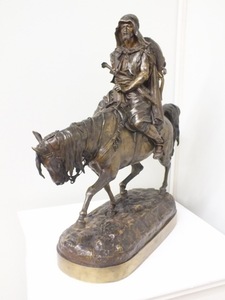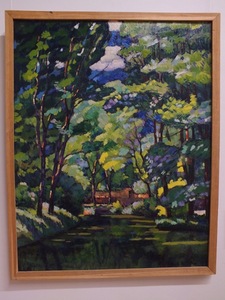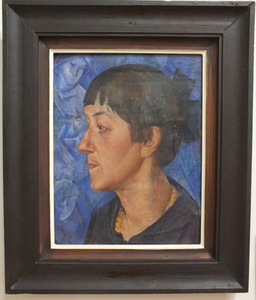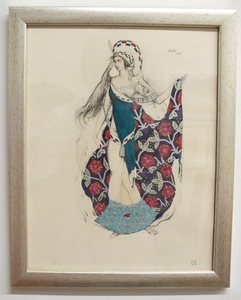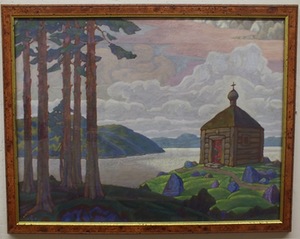Celebration of life and creation 0
In brief: What defines the art of one or the other epoch? Style, location, era? What gives an artwork its physical shape; what draws that unique contour, which will be impossible to repeat in the future? An artist? Unfortunately not. Art styles, movements and branches are much more than the activities of like-minded artists.
I wonder, how we would view Léon Bakst and his contemporaries today if not the World of Art collective that got together in St. Petersburg in 1898. The society established by Alexander Benoit and Sergei Diagilev united very different personalities, pursuing creative freedom, unconditional individuality, unique and refined aesthetics. The members of Society wanted to get away from the cold and rigid canon of academic art and to bring in a fresh and new breath of air into a Russian artistic life. Society admired the art nuveau style that was popular back then, European avant-garde art; they studied Rococo and Romantic works.
L. Bakst had captured all the Europe's attention with S. Diagilev's ballet troupe Russian seasons. L. Bakst's costumes and scenography where characterized with previously unseen exotic and oriental motifs in which the main means of expression was an intense, radiant color, in perfect harmony with the elegant and fluttering line. Artist's costume sketches alone, created with pencils, gouache, watercolor or other techniques on paper were viewed as independent works of art.
Equally attractive is L. Bakst's and his contemporaries' painting and graphics presented at the exhibition. It is amazing that the lively and youthfully optimistic works are in perfect harmony with artworks of more subtle mood, imbued with poetic, and melancholic intonations. L. Bakst's portraits offer a deep understanding gaze; they convey the psychology of the model, a special state of mind. Lyrical inner world is perfectly reflected in portraits of I. Levitan and F. A. Maliavin.
The exhibition also features works of Mstislav Dobuzhinsky, who was also a part of World of Art society and Ferdinand Ruszczyc, who had lived in Vilnius for quite some time. In addition to that, exhibition offers several pastels of M. K. Čiurlionis, whose talent was especially valued by the World of Art. It is obvious, that the wide choice of artists determines the stylistic diversity of the exhibition. Despite that, works of very different expressions coexist perfectly in the exhibition. Perhaps they share an infinite faith in the eternal values of humanity, a faith in art and creative power.
Author's photographs
